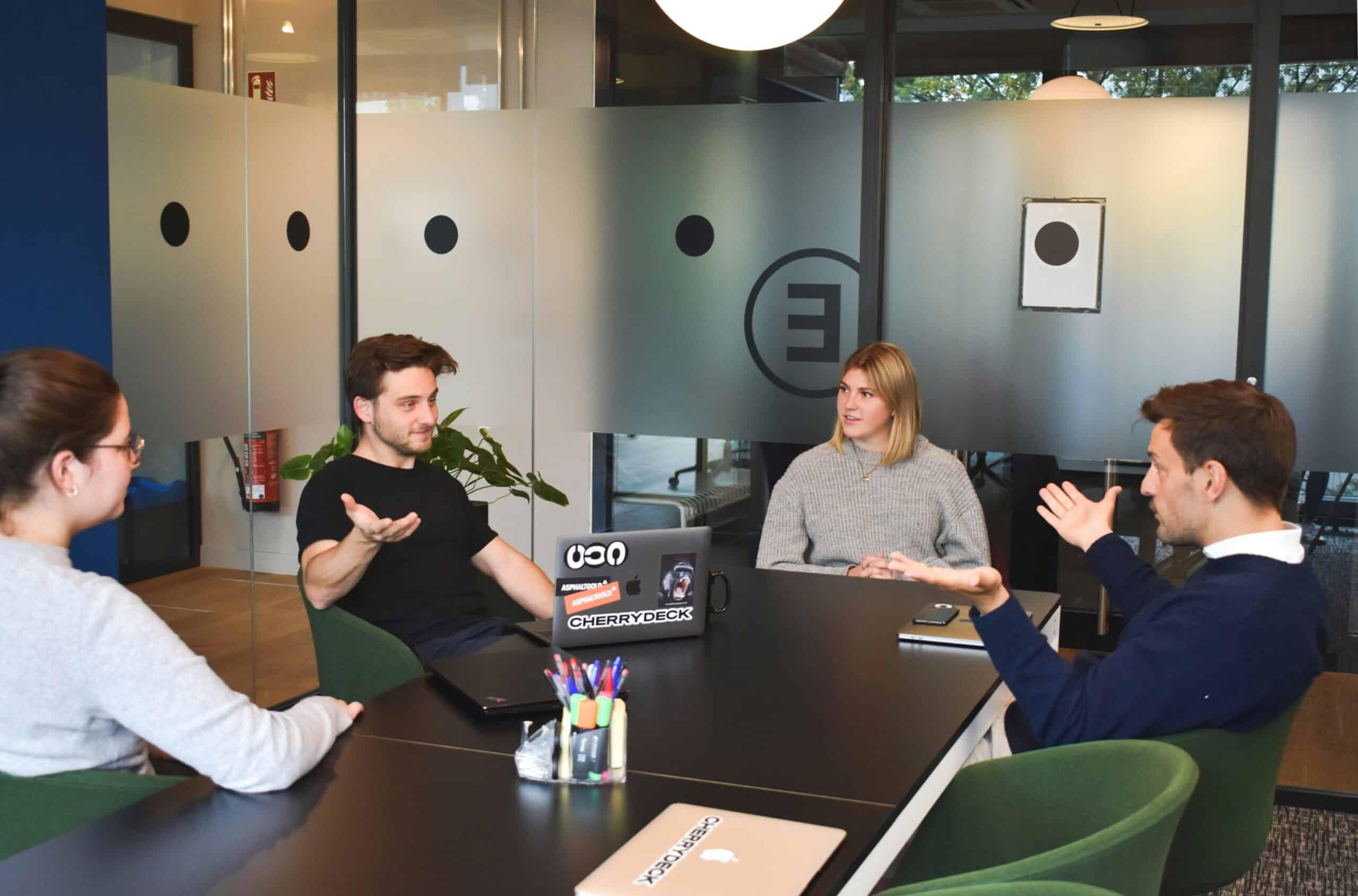In today’s competitive market landscape, businesses are continually seeking strategies to not only retain their current customers but also attract new ones. Loyalty marketing has emerged as a potent tool in this pursuit. It revolves around building long—term relationships with customers by providing consistent value, rewards, and personalized experiences that incentivize both repeat business and enthusiastic referrals. Companies that master the art of loyalty marketing quickly find themselves reaping benefits such as higher customer lifetime value, enhanced brand advocacy, and significant reductions in cost per acquisition. As organizations explore methods to capture the attention of potential customers, loyalty programs serve as a bridge between nurturing existing relationships and engaging new prospects.
At its core, loyalty marketing involves deploying a range of strategies tailored to encourage and reward customer engagement. These strategies encompass attractive welcome rewards, incentivized referrals, tiered benefits, early access offers, and innovative gamification techniques that drive both short-term enrollment and long-term commitment. Through personalized and data-driven loyalty offers, companies can clearly demonstrate the tangible benefits of staying engaged with the brand—benefits that ultimately influence prospect perceptions and drive customer acquisition. The renewed emphasis on digital transformation in marketing has also paved the way for sophisticated loyalty initiatives, seamlessly integrated within a broader digital strategy to automate touchpoints and continually nurture potential customers.
Moreover, the evolution of loyalty programs has shifted the narrative from simple point accumulation to multifaceted experiences that include social proof, community building, and cross-promotional collaborations. In this context, loyalty programs are not just retention mechanisms but are increasingly viewed as crucial acquisition channels. With well-crafted loyalty marketing strategies, businesses can tap into positive word of mouth, leverage existing customers as brand ambassadors, and ensure that every interaction adds value to both new and loyal customers.
This article delves into the various dimensions of loyalty marketing, outlining actionable strategies designed to boost customer acquisition. From understanding the role loyalty can play in redefining customer acquisition to advanced data-driven and community-focused methods, the comprehensive guide provides insights that any business looking to expand its customer base can implement. The following sections break down these strategies into clear segments, ensuring that companies can seamlessly weave them into their marketing efforts for maximum impact.
Key Takeaways
- Loyalty marketing is a strategic approach that leverages rewards and personalized experiences to both retain and acquire customers.
- Effective loyalty programs can reduce customer acquisition costs and boost customer lifetime value.
- Data and personalization are critical in designing and optimizing loyalty initiatives for customer acquisition.
- Advanced strategies such as community building and social endorsements enhance loyalty’s role in attracting new customers.
- Continuous refinement of loyalty initiatives based on performance metrics is key for sustained customer growth.
Understanding Customer Acquisition Through Loyalty Marketing

Loyalty marketing is redefining the traditional approaches to customer acquisition by integrating long-term engagement strategies into new business development. The central tenet of this approach is that a well-designed loyalty program not only retains existing customers but also acts as a magnet for prospective ones. By offering tangible rewards and personalized experiences, brands can create a strong value proposition that turns satisfied customers into enthusiastic advocates.
Redefining Loyalty Programs for New Customer Growth
The transformation in loyalty programs is evident in how they now incorporate elements traditionally associated with customer acquisition. Modern loyalty initiatives are not just about earning points; they focus on creating experiences that speak directly to new customers’ interests. When prospects observe friends or family benefiting from a compelling loyalty offer, their interest is piqued. Detailed program benefits, such as exclusive access to content, early product releases, or bespoke rewards, help to create an impression that joining the brand’s ecosystem is worthwhile. In one case study, a retail brand reported a 25% increase in customer acquisition rates after revamping their loyalty program to emphasize experiential rewards over points.
The Appeal of Loyalty Benefits to Prospective Customers
A primary driver behind new customer growth is the inherent appeal of loyalty benefits. Prospects are drawn to offers that promise immediate rewards and long-term perks. When a business highlights benefits such as cash-back incentives, tier upgrades, or priority customer service, potential customers see these advantages as a clear incentive to try the service. This immediate gratification, paired with the anticipation of cumulative future rewards, makes loyalty programs an effective acquisition tool. An effective program clearly communicates these benefits through targeted digital campaigns and social media testimonials, thereby nurturing a positive perception even before the customer makes a purchase.
How Current Loyal Members Attract New Patrons
Loyal customers often become brand ambassadors, and their influence can significantly impact new customer acquisition. When loyal members share their positive experiences on social media or through word of mouth, the authenticity of these endorsements tends to resonate with prospective customers. Data suggests that referral-based acquisition has a conversion rate up to 4 times higher than non-referred leads. These customers frequently highlight aspects such as the ease of earning rewards, the exceptional customer service, and the personalized touches that make their experience unique. Thus, leveraging current loyal members as advocates becomes an integral part of an overarching acquisition strategy, reinforcing trust and authenticity in the eyes of potential buyers.
Setting Your Brand Apart to Gain Customers With Loyalty Incentives
Standing out amid the competition requires a loyalty program that conveys distinct value. Efficiently designed loyalty strategies that incorporate personalization, gamification, and exclusive rewards help to set a brand apart. For instance, brands that offer multi-tiered rewards where customers see the immediate future value of progressing through levels can drive significant interest. Customizable rewards based on purchase history, location, and previous engagement further enhance the perceived value among new customers. Such personalized touchpoints also serve as a differentiator in crowded markets, making it more likely for prospects to choose a brand that seems to “get” them. Quantitatively, companies that personalize loyalty offers have seen an increase in new customer acquisition by as much as 30%.
Designing Loyalty Initiatives That Draw New Customers

Designing loyalty initiatives to draw in new customers involves creating strategies that are both attractive and practical. By focusing on the initial customer journey and ensuring that early interactions are rewarding, businesses can establish a strong foundation for long-term relationships. These initiatives must be developed with an understanding of the target audience’s behavior and preferences to ensure that the incentives offered resonate on a personal level.
Creating Attractive Welcome Rewards for Initial Customer Acquisition
The first impression is critical in the league of customer acquisition. Attractive welcome rewards serve as an effective tool to encourage new customers to take action. These rewards can include sign-up discounts, bonus loyalty points, or exclusive introductory offers. By providing a compelling reason to join the loyalty program right from the start, companies can increase initial sign-ups and enable a smoother onboarding process. For example, in the online retail sector, a welcome reward offering a 10% discount on the first purchase has resulted in a marked increase in conversion rates, as it addresses the immediate decision-making process of the customers.
Instituting Referral Systems That Incentivize New Customer Registrations
Referral systems enhance organic growth by incentivizing existing customers to bring in new prospects. A well-structured referral campaign not only rewards the referrer but also offers the new customer an introductory incentive, thereby creating a win-win scenario. This dual incentive model has been shown to improve customer acquisition numbers significantly. In industries like e-commerce and SaaS, referral programs have increased new registrations by over 40%, attributed primarily to the reliability of a trusted referral versus traditional advertising channels. This method emphasizes both social proof and the credibility of recommendations.
Arranging Tiered Loyalty Advantages to Show Prospects Future Value
Tiered loyalty programs are designed to offer increasing rewards as customers engage more with the brand, providing clear signals of escalating value. New customers can see tangible benefits from their initial interactions and are motivated to increase their engagement in order to attain a higher status within the program. A well-executed tiered loyalty system makes the growth path transparent, providing prospects with defined incentives such as additional discounts, exclusive events, or premium services. For instance, streaming services that offer tiered benefits have observed that users are more likely to upgrade when they can immediately perceive the potential benefits of climbing the loyalty ladder. This forward-looking strategy underlines future value, thus enticing new customers right from their first interaction.
Providing Special Early Access to Pull in New Groups
Special early access programs can dramatically improve customer acquisition by making new users feel privileged. Early access allows potential customers to try new products or features ahead of the general public, thereby creating a sense of urgency and exclusivity. This not only incentivizes joining but also increases engagement as customers become excited about being part of a select group. Early access initiatives are particularly effective in technology and fashion industries, where trends often drive purchase decisions. A tech startup, for example, reported a 35% surge in new sign-ups after launching an early access program for its beta software, as it allowed interested customers to experience innovative features before they were widely available.
Using Gamification Within Loyalty to Generate Interest and Acquire Users
Gamification introduces elements like challenges, competitions, and rewards to the customer journey, transforming routine interactions into engaging experiences. Incorporating game-like mechanics into loyalty initiatives can significantly increase user participation and overall satisfaction. For new customers, gamification means that every purchase or interaction could yield points which can later be redeemed for discounts or exclusive offers. This dynamic approach has been successfully applied in sectors such as retail and online services, where a fun, competitive element drives higher usage rates. Stories abound of companies that have seen engagement rates climb by 50% by incorporating gamified rewards, which not only foster a sense of achievement among new customers but also create memorable brand interactions.
Promoting Your Loyalty Program for Optimal Customer Acquisition Results

Promotion plays a crucial role in the success of any loyalty program, especially when the goal is to attract new customers. Strategic promotion involves highlighting the benefits of loyalty perks across various channels, ensuring that the program’s value proposition is communicated effectively to potential clients. In today’s digital landscape, leveraging social media, partnerships, and other marketing channels is essential for maximizing program visibility and driving enrollment.
Showcasing Loyalty Perks in Your Customer Acquisition Process
Incorporating loyalty perks directly into the customer acquisition process reinforces the message that new customers stand to gain immediate benefits by joining the program. By prominently displaying loyalty rewards on landing pages, email marketing campaigns, and during in-store interactions, brands can capitalize on the initial interest generated by potential customers. For instance, a financial services firm highlighted their exclusive cash-back offers during the sign-up process, resulting in a significant uplift in conversion rates. Clearly showcasing perks such as free trials, bonus points, or exclusive services provides prospective customers with clear value, thereby accelerating the decision-making process.
Employing Social Endorsements From Loyal Members to Attract New Business
Social endorsements are among the most persuasive forms of promotion. When current loyalty program members share their positive experiences through testimonials, case studies, or social media posts, these endorsements serve as strong social proof for new customers. Research shows that 84% of consumers trust online reviews and recommendations from friends and family over traditional advertisements. Therefore, integrating these testimonials into your promotional materials can improve both credibility and trust. Brands that actively showcase customer success stories and reviews tend to attract new members more efficiently, as they provide authentic insights into the tangible benefits of participation.
Collaborating With Other Companies for Joint Loyalty Acquisition Efforts
Collaborative partnerships offer an innovative way to extend the reach of loyalty programs. Businesses can team up with complementary brands to develop joint promotions that benefit both parties, thereby tapping into each other’s customer bases. For example, a restaurant chain might partner with a retail brand to offer combined discounts or exclusive packages for loyalty members, thus delivering added value to new customers. Such alliances not only enhance the promotional efforts but also heighten the perceived value of the loyalty program, as customers feel they are receiving multi-dimensional benefits from their enrollment.
Clearly Stating the Value of Loyalty to Potential Customers
Transparency in communicating the value of a loyalty program is paramount for attracting new customers. Businesses must articulate what makes their loyalty program unique and beneficial, outlining clear, quantifiable outcomes such as cost savings, exclusive experiences, or enhanced customer support. Detailed infographics and summary tables can be particularly effective in conveying this information. Once a prospective customer understands how the program can improve their overall experience, they are more likely to sign up and engage deeply with the brand’s offerings.
Weaving Loyalty Program Promotion Into Your Marketing Efforts
Integrating the promotion of your loyalty program into every aspect of your marketing efforts ensures that its benefits are consistently communicated. This means incorporating loyalty program details in email marketing, social media campaigns, paid advertising, and even in traditional print media. By weaving the program’s value across all touchpoints, a brand creates a cohesive narrative that not only attracts new customers but also reinforces existing relationships with current members. This omnichannel approach helps to build a unified customer experience, ensuring that every interaction reaffirms the benefits of joining the loyalty program.
Utilizing Data and Personalization in Loyalty for Customer Acquisition

The substantial growth in digital marketing has opened avenues for data-driven personalization, allowing loyalty programs to be tailored to the specific needs of each customer. By leveraging data analytics, companies can refine their loyalty offerings to appeal directly to new customers, ensuring that every interaction feels personal and relevant. The integration of data and personalization transforms loyalty programs from generic rewards systems into dynamic platforms that adapt in real time to customer behavior.
Applying Customer Information to Customize Loyalty Offers for Acquisition
Analyzing customer behavior and purchasing patterns provides critical insights that can be used to tailor loyalty offers to meet the precise needs of potential customers. For instance, using purchase history and demographic data, companies can create highly targeted promotions that resonate with individual prospects. This customization not only enhances the overall customer experience but also drives acquisition rates by making the program appear highly relevant and personal. A data-driven approach can lead to a significant increase in conversion rates as offers are tailored to customer preferences, thereby reducing abandonment at the critical decision-making phase.
Tailoring the First Loyalty Experience for New Entrants
The first experience a new customer has with a loyalty program sets the tone for their long-term engagement. Personalizing the initial welcome experience—such as offering a customized discount or curated selection of rewards—ensures that the customer feels valued from the outset. When new users receive a tailored welcome package based on their interests or previous interactions, they are more likely to view the program as relevant and beneficial. Early positive experiences not only improve retention rates but also promote higher levels of engagement, as customers quickly associate the program with personalized value.
Dividing Potential Customers for Focused Loyalty Program Outreach
Segmenting potential customers based on various criteria such as demographic data, online behavior, and purchasing patterns allows companies to design targeted loyalty initiatives. By creating specific channels of outreach for different customer groups, brands can ensure that the messaging is relevant and compelling. Segmentation helps in crafting distinct loyalty offers that meet the specific needs of each group, thereby making the outreach more effective. The tailored approach sees customer acquisition rates soar, as prospects are more likely to respond to offers that feel uniquely suited to their preferences and situation.
Demonstrating to Prospects How Loyalty Addresses Their Unique Requirements
For a loyalty program to be truly effective in acquiring new customers, it must address the unique requirements of each potential client. This involves using data insights to illustrate clearly how the loyalty program can solve specific customer challenges. For instance, a loyalty program might be designed to reward frequent purchases, offer personalized discount codes, or even provide exclusive access to product launches. By explicitly linking loyalty benefits to individual customer needs, brands can create a compelling narrative that persuades prospects to join the program. Detailed analytics and case studies help in demonstrating these benefits, making the information concrete and actionable for new customers.
Gauging the Effectiveness of Loyalty Marketing in Customer Acquisition

Measuring the success of loyalty marketing efforts is essential for continually refining strategies and maximizing return on investment. Effective metrics not only reveal how well the program performs in driving new customer acquisition but also highlight areas where adjustments can yield greater benefits. The ability to track specific indicators of success turns loyalty marketing into an agile, data-informed system that aligns with overall business goals.
Core Indicators for Monitoring New Customer Acquisition From Loyalty Plans
Key performance indicators such as new customer sign-ups, conversion rates, referral rates, and engagement levels serve as the backbone of any loyalty marketing analysis. By systematically tracking these metrics, companies can gain a clear understanding of the program’s impact on customer acquisition. For example, an increase in referral-based sign-ups is a strong indicator of both customer satisfaction and the effectiveness of the loyalty program. The use of advanced analytics tools and segmentation techniques can further break down performance metrics by customer demographics, providing actionable insights into where the program succeeds and where it needs improvements.
Reviewing the Financial Soundness of Loyalty-Driven Customer Acquisition
Assessing the financial impact of loyalty programs is another critical factor in determining their overall value. This involves calculating metrics such as the customer acquisition cost (CAC) in relation to the average customer lifetime value (CLV). By comparing these two figures, companies can determine whether the loyalty initiatives are financially sustainable over the long term. Financial models that use historical data and projected growth estimates can highlight the return on investment from loyalty-driven strategies. A detailed financial review often reveals that loyalty programs, when executed correctly, significantly reduce the CAC while simultaneously increasing the CLV, making them a strategic financial investment.
Assigning New Customer Origins to Particular Loyalty Program Elements
Attributing new customer acquisition to specific elements within a loyalty program helps in identifying the most effective aspects of the initiative. By using tracking mechanisms such as referral codes, unique landing pages, and dedicated promotional campaigns, companies can assign acquisition metrics to precise program components. This granular view allows for a detailed analysis of which loyalty benefits are most attractive to new customers and informs decisions about reallocating resources to maximize overall performance. Ultimately, this level of insight ensures that marketing budgets and strategic efforts are optimized for the best possible outcomes.
Refining Loyalty Approaches Based on Acquisition Outcome Figures
Continuous improvement is the cornerstone of successful loyalty marketing. Analyzing acquisition outcome figures enables marketers to refine their loyalty approaches in real time. This iterative process involves using A/B testing, customer feedback, and performance analytics to adjust reward structures, communication strategies, and promotional offers. The insights gained from these analyses are indispensable for making data-driven decisions that drive customer acquisition. By routinely recalibrating the program based on empirical data, organizations not only improve their customer acquisition metrics but also ensure that their loyalty strategies remain relevant and competitive in a rapidly evolving marketplace.
Advanced Loyalty Methods for Continuous Customer Acquisition Expansion

To sustain customer acquisition growth, businesses must look beyond conventional loyalty methods and adopt advanced strategies that foster a dynamic, ever-evolving program. These advanced methods are designed to harness the full potential of customer relationships, transforming loyalty programs into organic engines for customer growth. By leveraging community-building, unique program offerings, and the transformation of loyal customers into brand promoters, companies can maintain a constant inflow of new clientele while continually engaging existing members.
Fostering a Community Around Your Loyalty Program to Engage Prospects
Creating a community environment around a loyalty program encourages interaction, shared experiences, and organic growth. Leveraging online forums, social media groups, and in-person events can facilitate a sense of belonging and active participation among members. When potential customers witness a vibrant community where members exchange tips, celebrate milestones, and support each other, they are more likely to feel that joining the program will add value to their own lives. Data from community-based loyalty programs show a marked increase in long-term engagement and customer retention, positioning community engagement as a key driver of new customer acquisition.
Positioning Loyalty Program Uniqueness as a Customer Acquisition Draw
Differentiating a loyalty program based on unique offerings and exclusive benefits is an effective strategy for attracting new customers. When a program is clearly distinguished from competitors—for example, through innovative tier systems, bespoke rewards, or exclusive partnerships—it becomes a compelling reason for prospects to choose that brand. By highlighting the distinct advantages of the loyalty initiative, such as superior customer service, personalized rewards, or exclusive access to events, companies can create a strong competitive advantage in the marketplace. This unique positioning not only drives acquisition but also bolsters brand identity and customer satisfaction.
Transforming Loyal Customers Into Promoters for Gaining New Ones
One of the most powerful advanced loyalty strategies is converting existing loyal customers into active promoters. As advocates, these customers share their positive experiences with their networks, effectively becoming organic, unpaid marketers for the brand. Companies that incentivize these advocates through additional rewards, exclusive access, or recognition programs often see a significant rise in referral-based acquisition. Studies indicate that customer-generated referrals can result in conversion rates four times higher than other channels. By creating seamless opportunities for loyal customers to share and promote the brand, businesses can tap into a growing source of new customer engagement.
Refreshing Your Loyalty Offers to Attract New Clientele Consistently
Keeping loyalty offers fresh and enticing is vital for maintaining interest among prospective and existing customers. Over time, the same rewards can lose their appeal, making periodic updates and seasonal promotions essential. By analyzing data on customer preferences and campaign outcomes, brands can innovate and refresh their loyalty offerings to ensure they remain competitive and engaging. Whether through limited-time challenges, exclusive new product releases, or innovative gamification elements, a continuous evolution of the loyalty program signals to prospects that the brand is dynamic and customer-centric. This proactive approach toward loyalty marketing results in improved customer acquisition metrics and sustained market momentum.
Frequently Asked Questions
Q: How can loyalty marketing drive new customer acquisition? A: Loyalty marketing drives new customer acquisition by leveraging rewards, personalized offers, and referral incentives that benefit both new and existing customers. When prospects see tangible benefits through early access, discounted offerings, or community endorsements, they are more likely to join the program. This process not only enhances customer engagement but also reduces the overall acquisition cost as satisfied members promote the brand through word of mouth.
Q: What are the key metrics to evaluate loyalty-driven customer acquisition? A: Key metrics include new customer sign-up rates, conversion rates from referrals, overall engagement levels, customer lifetime value (CLV), and the return on investment (ROI) of loyalty programs. By tracking these indicators through sophisticated analytics tools, companies can gauge whether their loyalty strategies are effectively attracting new customers and adjust the initiatives accordingly for maximum impact.
Q: Why is personalization important in loyalty marketing? A: Personalization is crucial because it tailors the customer experience to individual needs, making loyalty offers more relevant and compelling. Using data insights, brands can create customized reward structures, targeted promotions, and individualized communication strategies that resonate with prospects. This personalized approach increases the likelihood that new customers will join the program and become long-term, engaged members.
Q: How do referral programs enhance loyalty-based customer acquisition? A: Referral programs enhance customer acquisition by incentivizing loyal members to promote the brand to their social networks. When existing customers recommend a brand, their positive experiences serve as authentic endorsements that build trust among potential new customers. By offering rewards on both ends—the referrer and the referee—such initiatives drive organic growth and contribute significantly to lower acquisition costs.
Q: What advanced methods can further expand loyalty’s customer acquisition potential? A: Advanced methods include building a dedicated community around the loyalty program, offering unique or exclusive rewards that differentiate the brand, and transforming loyal customers into brand ambassadors. Additionally, regularly refreshing loyalty offers and using detailed analytics to fine-tune program elements can sustain engagement and ensure continuous acquisition. These strategies collectively push the boundaries of traditional loyalty schemes, turning them into dynamic customer acquisition engines.
Final Thoughts
In summary, integrating loyalty marketing into a customer acquisition strategy provides a multifaceted approach to building a sustainable customer base. By designing personalized and engaging loyalty initiatives, companies can effectively attract new prospects while deepening existing relationships. Advanced methods such as community building, social endorsements, and continuous program evolution further amplify the conversion potential. As brands refine these tactics using sophisticated data analysis, the outcome is a powerful, scalable system that not only enhances customer retention but also drives new customer acquisition at reduced costs.






